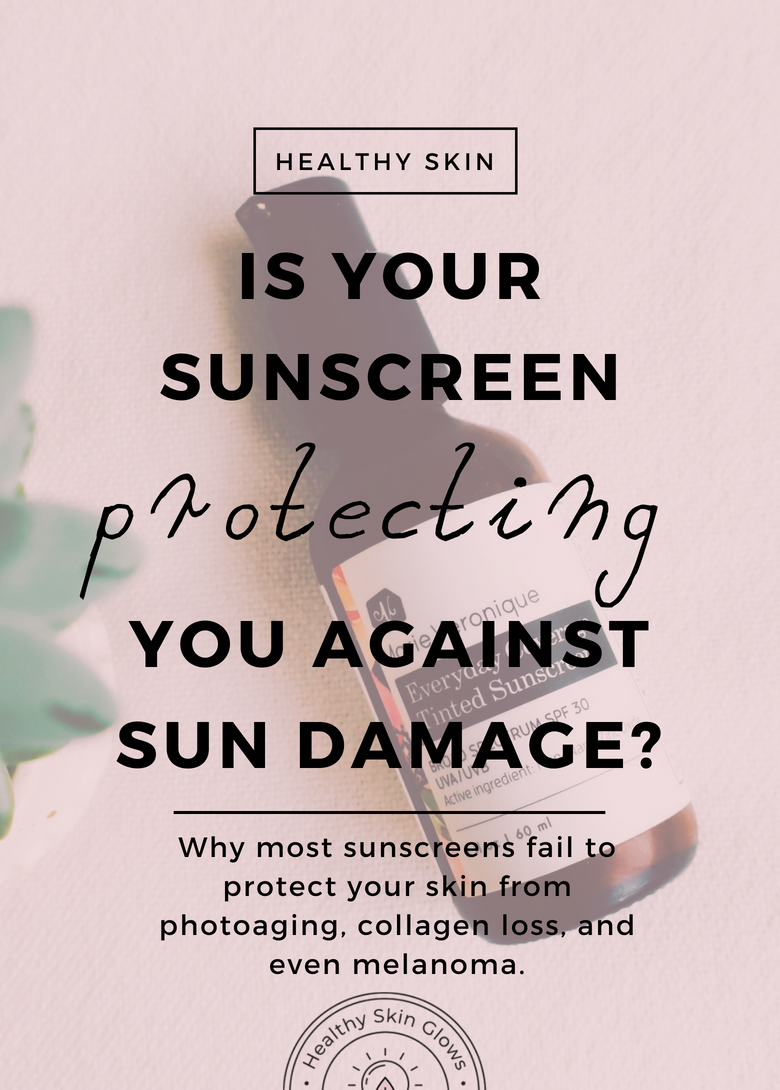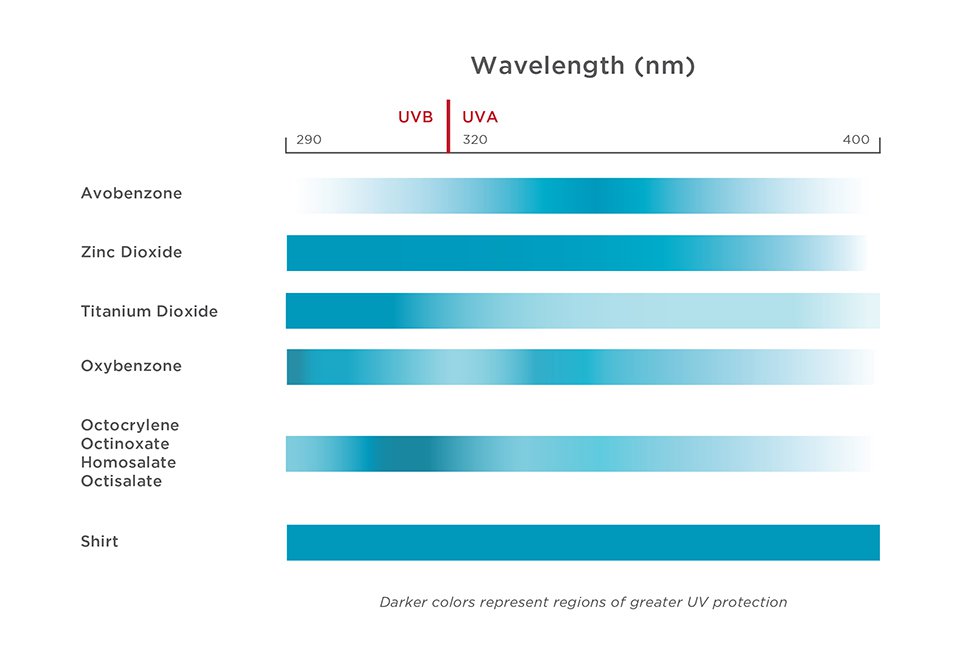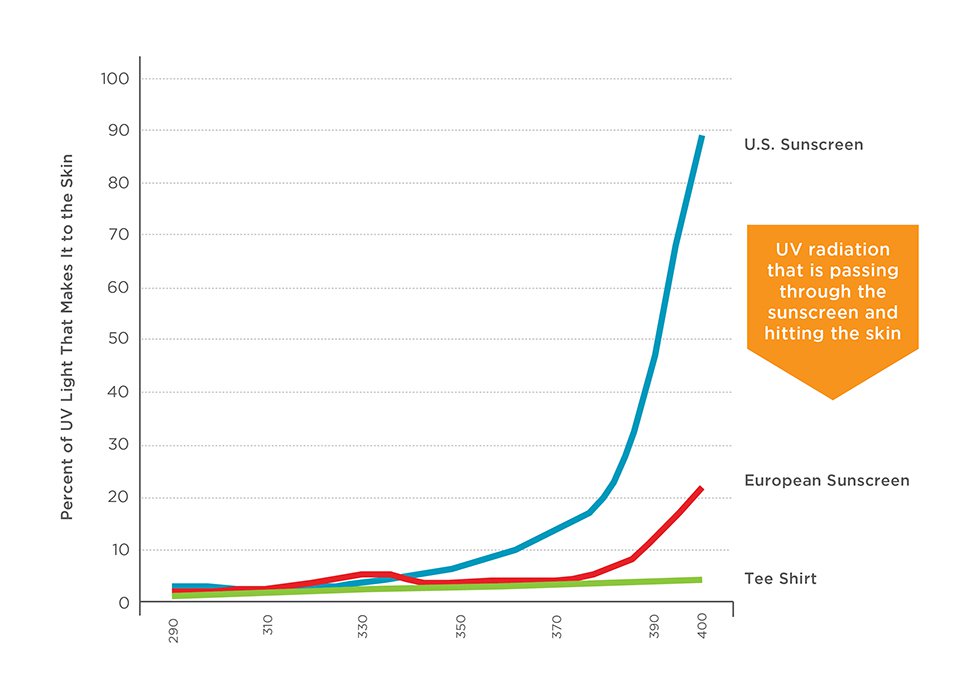
I come from a small tourist town on the coast of Dalmatia in Croatia. This region has over 100 sunny days per year (although it feels like more).
Needless to say, I grew up with frequent sun exposure and have learned how to behave accordingly (I think I've burned only twice in my life).
It may come as a surprise, but I don't see sunscreen as the “holy grail” of sun protection at all. Sadly, the unforgiving numbers seem to agree with my experience, too.
Non-melanoma skin cancer rates have increased by 77% from 1994 to 2014 (source) especially in young adults (source), despite increasing awareness about sun exposure and wearing more sunscreen. In the UK, melanoma skin cancer incidence rates have increased by 50% over the past decade.
What are we doing wrong?
Applying sunscreen prior to sun exposure is important, but we must also understand how sunscreens work and what they actually protect us from.
Here is what you need to know before you buy your next sunscreen.
UVA ARE “AGING” RAYS, UVB ARE “BURNING” RAYS
SPF MEASURES HOW WELL A SUNSCREEN PROTECTS YOU FROM SUNBURN – NOT UVA RAYS!
DO SUNSCREENS PROTECT US EQUALLY WELL FROM BOTH UVA AND UVB?
The short answer is no.
Just how well a sunscreen protects us against UVA depends on the formulation, and how we use it – whether we apply enough and reapply regularly. Still, a sunscreen rarely (if ever) offers equally good protection against both UVA and UVB.
Today we have “mineral” and “chemical” sunscreens (a mix of both are also available).
Chemical sunscreens contain one or more organic substances such as oxybenzone, avobenzone, octisalate, octocrylene, homosalate and octinoxate. They mostly work by absorbing UV rays and releasing small amounts of heat because of it.

Avobenzone has been approved in 2006 by FDA, after which the Broad Spectrum testing was developed. Broad Spectrum indicates the presence of both UVB and UVA filters in a sunscreen.
So, for many years before that, people slathered only UVB-blocking sunscreen, while UVA rays penetrated freely. No doubt, plenty of damage can be done without your skin ever burning!
In Europe, there are 7 allowed substances that provide adequate protection against UVA (at least under testing, real life is often more challenging due to sweating, insufficient application, etc).
While many U.S.-made sunscreen products claim “broad spectrum” sun protection, implying protection from UVB and UVA rays, they actually vary substantially in the degree of UVA protection they offer. ~ EWG
UVA PROTECTION OF SUNSCREENS BETTER IN EUROPE THAN THE USA

British researcher Brian Diffey evaluated the UV protection of four U.S. sunscreens and four sold in Europe, each of which had an SPF value of 50 or 50+. He found that the U.S. sunscreens allowed, on average, three times more UVA rays to pass through to skin than European products, which included the modern UVA filters. ~ EWG
HOW I CHOOSE A WELL-FORMULATED SUNSCREEN
So how do we protect our skin without being afraid of the sun (which is also a bad idea)? 15 minutes or so of sun exposure daily (over a larger area of your body) is crucial for adequate vitamin D production.
Plus, it feels good to get some sun on your skin, wouldn't you agree?
Using a well-formulated sunscreen year round and practicing responsible sun exposure can help protect your skin against sun damage, hyperpigmentation, early aging, sagging skin, skin dehydration, and acne.
I like to have either fully zinc-oxide sunscreen or a mix of zinc oxide with titanium dioxide, where zinc oxide percentage is over 15% (preferably close to 20%). In addition, you will rarely see me outside during peak sun hours (11am-3pm) or without a hat (during summertime).
I avoid avobenzone, the “chemical” UVA-blocking ingredient, because it is unstable – it degrades when exposed to the sun. Manufacturers aim to improve its stability by mixing avobenzone with other active ingredients, such as octocrylene or inactive ingredient stabilizers, with varying degrees of success (source).
Furthermore, certain substances in “chemical” sunscreens, such as oxybenzone, are potential hormone disruptors (source).
Since I have acne-prone skin, I also avoid heavy and comedogenic ingredients in my skincare products, including the natural ones. You can get the full list in this blog post:
Related: How I Choose Non-Comedogenic Makeup (FREE Guide Inside!)
In summary, to protect your skin from both UVB and UVA as much as possible, without compromising your health and wondering whether a formulation of a “chemical” sunscreen is good enough, aim for a ~20 % zinc oxide sunscreen.
Use it every day at the end of your morning skincare routine every day of the year. Try reapplying it throughout the day (powder sunscreens are a good option) and using protective clothing and hats when in direct sun.
My fave mineral sunscreens:
Marie Veronique Everyday Coverage Tinted Sunscreen SPF30 – It is perfect for oily or combination acne-prone skin because it is so lightweight while still offering some coverage (plus it mattifies really well!). Actually, it may be too drying if your skin is dry. The active ingredient is zinc oxide at 20% concentration.
MyChelle Dermaceuticals Sun Shield Unscented SPF 28 – This is an unscented, mineral-based sunscreen with Aloe and Vitamin E to soothe and protect. The formula is lightweight and absorbs quickly. Definitely a good mineral sunscreen that won’t clog your pores, especially in this price range.
Madara Stem Cell Sunscreen For Face SPF30 – this is my current fave! It absorbs really well and is slightly tinted. I think it can work well for all skin types.
In radiant skin health,
Sara
Questions! What are your fave sunscreens for acne-prone skin? Have you tried any powder sunscreens (looking for a recommendation)!
P.S. Some of the above links are affiliate links. Thank you for your support!
Are you in your 20s or 30s, and tired of still struggling with acne and breakouts? There is so much misinformation about the right skincare for getting clear skin, and caring for sensitive acne-prone skin. This is why I made a FREE online course where you will find little-known skin healing secrets you won't usually hear from the skincare industry or dermatologists. And yet, they WORK.
Sign up (and get instant access!) here:


Super informative post, Sara!
Thank you so so much, dear Becca! Always a pleasure getting your feedback! :)) <3
This has to be the best post I’ve read on sunscreen. 👌👌👌 very well written.
THANK YOU so much Raquel!! :))) I really appreciate it, and thank you for reading!:) <3
Thank you so much for spreading this information, I really didn’t know this! Would this sunscreen clog my pores? “Rocky Mountain Soap Company Vanilla Coconut Natural Sunscreen SPF 31”
You’re welcome!:)) It looks like a good sunscreen to me! Maybe shea butter can be comedogenic for some people, but I would give it a try (unless your skin reacts to oils and is very acne-prone).
Are the zinc oxide sunscreens coral reef and/or waterway safe? Thanks!!
Substances in “chemical” sunscreens, such as oxybenzone and octinoxate have been linked to coral bleaching, but not zinc oxide.:) Luckily!
Amazing! Cant wait to pass this one to my friends!!
Thank you so much, Ria!!:))) <3
Hi sara, i enjoy reading all ur postings, great infos! Im a devoted user of sunscreens n im interested to try all that u recommended here. Due to my belief there r certain restrictions that i need to follow so im asking if u know is any of the sunscreens above contains animal ingredients? Tq
Hi!:) Oh, I have really no idea! They don’t contain beeswax, but other than that, you would need to check ingredients for each! sorry!:(
Have u tried sanre organic sunscreen? And what do u think about elta md physical sunscreen? Ur thoughts r appreciated tx.
No, I haven’t tried either! Sanre seems like a nice natural line, but I can’t find the sunscreen ingredients. Elta MD has both physical and chemical filters, plus HA and some antioxidants, which is nice, but I don’t like some other ingredients, like lactic acid. Why having an exfoliant there? I have also seen quite a few reveiws where people had bad reaction to the product, but then again, it might work for you.
Hi! Could you recommend your top one or two full-body sunscreens – preferably available in the US? After reading this post and checking out EWG I know we need to make a change and would love your opinion as there are so many!
Badger sunscreens are my go-to!! Highly recommended!
Hi SARA. That’s a great article, I love this. You pop up my knowledge more about Sunscreens. I’m interested Sunscreens as you suggested. By the way, I think we should nourish our facial skin as well because the skin can be harm by the sun although we use sunscreen, so I also use collagen cream for anti-aging benefits after going out, collagen cream that I found a positive result as shown here http://www.womensedge.org/10-best-collagen-creams/. However, could you recommend best full-body sunscreens ? Thank you in advance for your suggestion.
Hi Issie! Thank you so much!:) Yes, we should definitely protect our skin beyond sunscreen! For full body sunscreens, I love and use Badger Balm! Some of them leave a white cast, but I don’t mind as long as they work (which they do). They claim new formulas don’t leave the white cast:)
I havent try it yet but it was high on my wishlist! So is lactic acid is like surfactant? If so then its not for me. About sanre i saw in the website that it got zinc oxide n titanium dioxide but not stated what amount. Again tx for ur feedback 🙂
Lactic acid is an exfoliant, and I advise against exfoliation in the AM, because it increases sensitivity to the skin and makes skin weaker in fighting off oxidative damage throughout the day. So not sure why they have it in the sunscreen!
Hi Sara!! I’ve loved your post. It is Very interesting… do you know if heliocare Gel oil-free is a safe option??? I live in europe and My dra toldo me to use it…
thank you so much in advance…
Maria 🙂
Hi Maria! Thank you so much! That heliocare option seems to be a mix of some chemical filters and nano titanium oxide. Nano particles haven’t been shown to be damaging for human health, but there are some concerns. For me personally, this sunscreen wouldn’t be a top choice.:)
Fantastic post. I’ve written something similar in my own blog. Finding adequate UVA protection is frustrating. Thanks for the recommendations!
Hi Sara, what do you think about uncoated zinc oxide being photoreactive, and as far as I have researched most of the zinc oxide sunscreens today (being more non-toxic) use non-coated zinc oxide? Also considering micronized and nano-partciels of zinc oxide uncoated are disposed to absorbing in to the skin?
Badger uses for instance «zinc-clear». Would love to have your thoughts on these questions!
What do you think about Pipette Mineral Sunscreen SPF 50 – 4 fl oz / 120 ml
I found it on credo beauty website. It says it’s very natural.